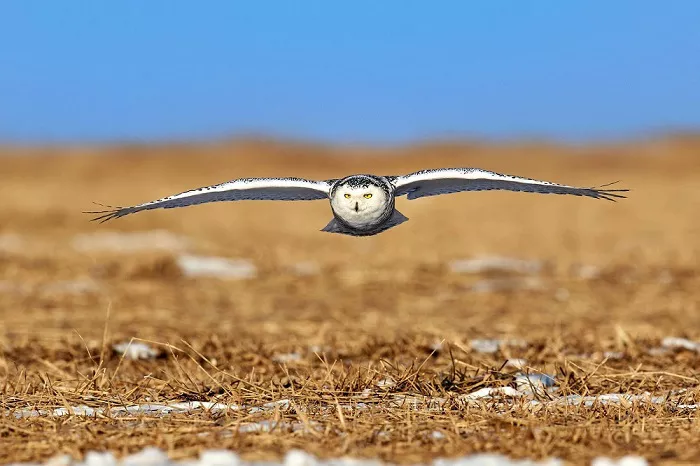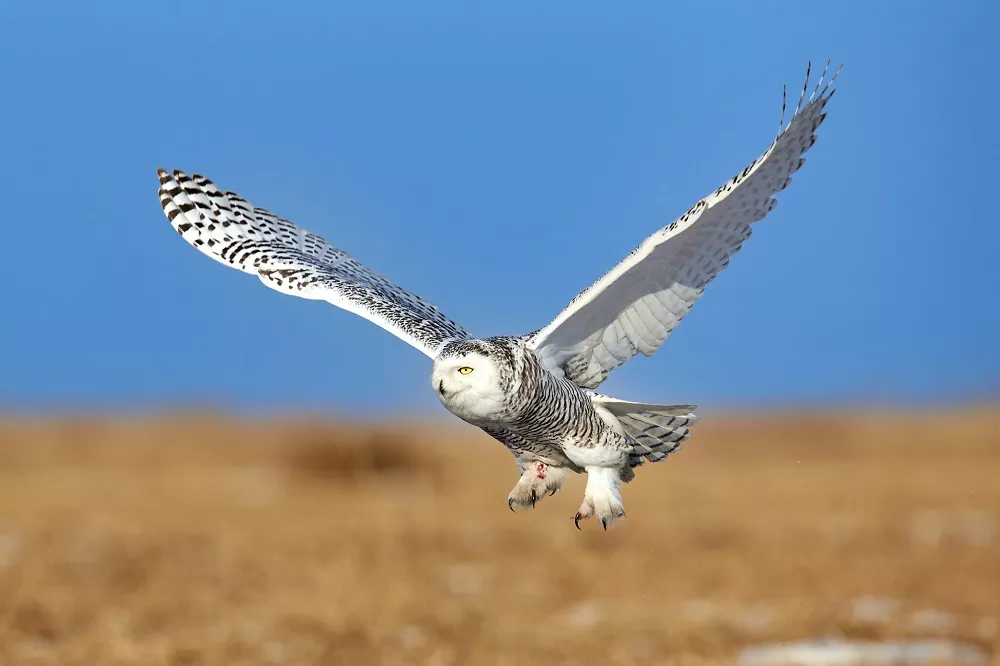Snowy owls, also known as Bubo scandiacus, are one of the largest and most iconic birds of prey in the world. These magnificent creatures are renowned for their striking appearance, with their pure white feathers and piercing yellow eyes. However, despite their widespread fame, many people are unaware of where snowy owls actually live.
Geographical Distribution
Snowy owls are native to the Arctic regions of North America and Eurasia. They can be found across the tundra areas of Alaska, Canada, and Russia, as well as in northern Scandinavia and parts of Greenland.
Snowy owls are known for their ability to cover great distances during their seasonal migrations, which can take them as far south as the United States, Europe, and Asia. However, their breeding range is typically restricted to the high Arctic tundra, where they build nests on the ground or on elevated ridges and rock outcroppings. The availability of prey, such as lemmings, voles, and hares, largely determines the range of snowy owls, as they require open tundra habitat with undulating terrain and scattered vegetation to hunt and roost.
Habitat
Snowy owls are typically found in the Arctic regions of North America, Europe, and Asia. During the breeding season, they nest on the ground in open tundra areas, often near water. In the non-breeding season, snowy owls may migrate to southern Canada, the northern United States, and some northern European countries, where they may inhabit coastal dunes, fields, and other open areas. Snowy owls are adapted to cold temperatures and are well-suited to life in the Arctic, where they prey on a variety of animals including lemmings, voles, and birds.
Behavior
Snowy owls are diurnal hunters, meaning that they are active during the day. They hunt by swooping down onto unsuspecting prey from above, using their powerful talons to catch and kill their quarry. Despite their impressive size, snowy owls are surprisingly agile in flight, able to turn and maneuver with remarkable speed and precision.
Migration
One of the most fascinating aspects of snowy owl behavior is their seasonal migration. Unlike many other bird species, snowy owls do not migrate south for the winter. Instead, they undertake what is known as an “irruption,” which involves moving southward in search of better food sources when prey populations are low in their usual range.
These irruptions can occur on a sporadic basis, with no discernible pattern from year to year. However, they are often associated with cyclical changes in the abundance of lemmings and other small mammals, which form the bulk of the snowy owl’s diet.

Snowy Owls in flight
Where do Snowy Owls nest?
Snowy owls typically nest on the ground in open tundra areas, often near water. They create shallow depressions in the ground, which they line with grass, moss, and feathers to create a soft surface for their eggs. Snowy owls do not build nests in trees or other elevated structures like some other owl species. Instead, they rely on their excellent camouflage and sharp talons to protect their eggs and young from predators. Depending on the availability of prey and other factors, snowy owl breeding territories can range from a few square miles to over 100 square miles in size.
Where can I see Snowy Owls in USA?
Snowy owls can be found in several locations throughout the United States during the winter months when they migrate from their breeding grounds in the Arctic. Some popular places to see them include:
-
Alaska:
Snowy owls can be spotted in various parts of Alaska, especially along the coast.
-
Minnesota:
The Sax-Zim Bog is a popular spot for birdwatchers looking to catch a glimpse of snowy owls.
-
Michigan:
The Sleeping Bear Dunes National Lakeshore is known to attract snowy owls during the colder months.
-
New York:
Jones Beach State Park and Montauk Point State Park are both great places to see snowy owls on Long Island.
-
Wisconsin:
The Horicon Marsh Wildlife Area is a prime location for spotting snowy owls in Wisconsin.
Conclusion
In conclusion, snowy owls are stunning birds of prey that inhabit the Arctic regions of North America and Eurasia. They prefer open tundra habitats and hunt during the day, using their impressive agility and powerful talons to catch a variety of small mammals. While they face a range of threats due to human activity and environmental change, efforts are underway to protect and conserve this iconic species for future generations to enjoy.
Related topics:


 Facebook
Facebook  Instagram
Instagram  Youtube
Youtube 